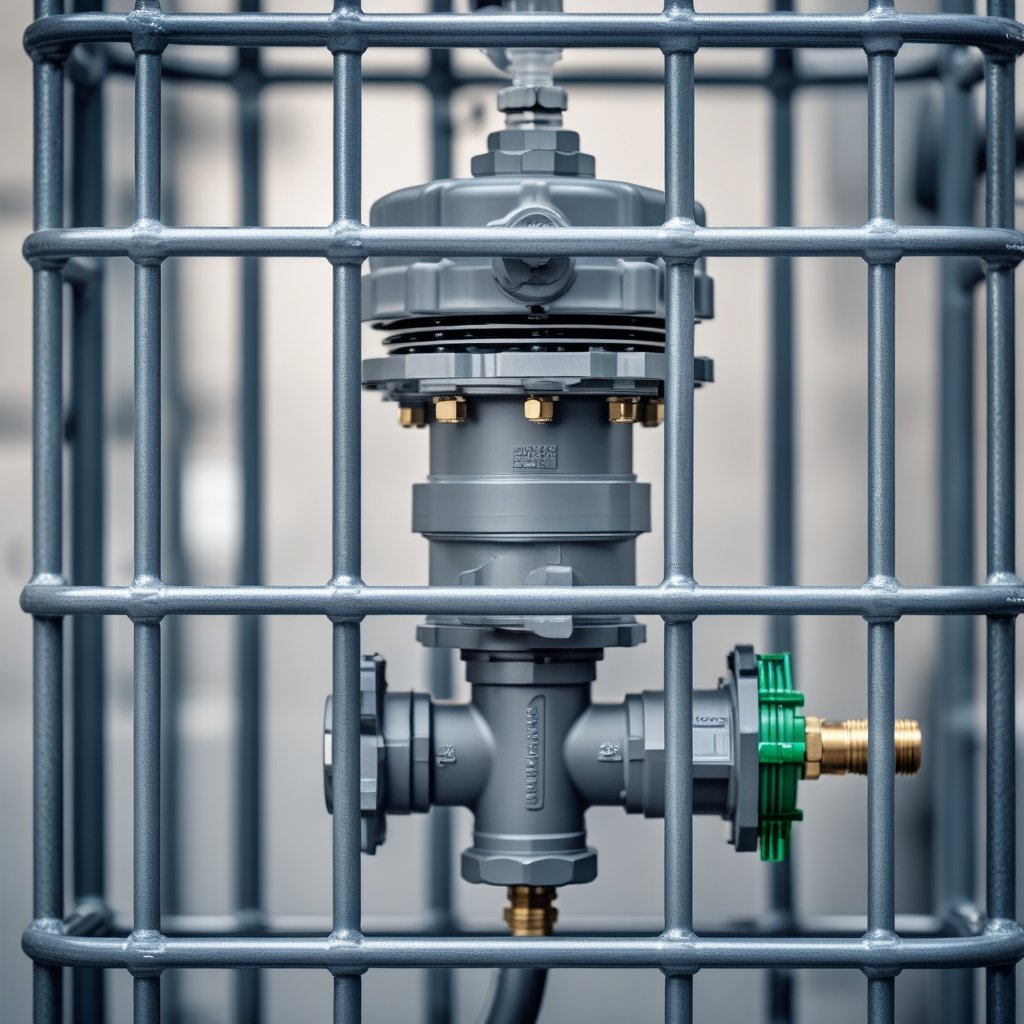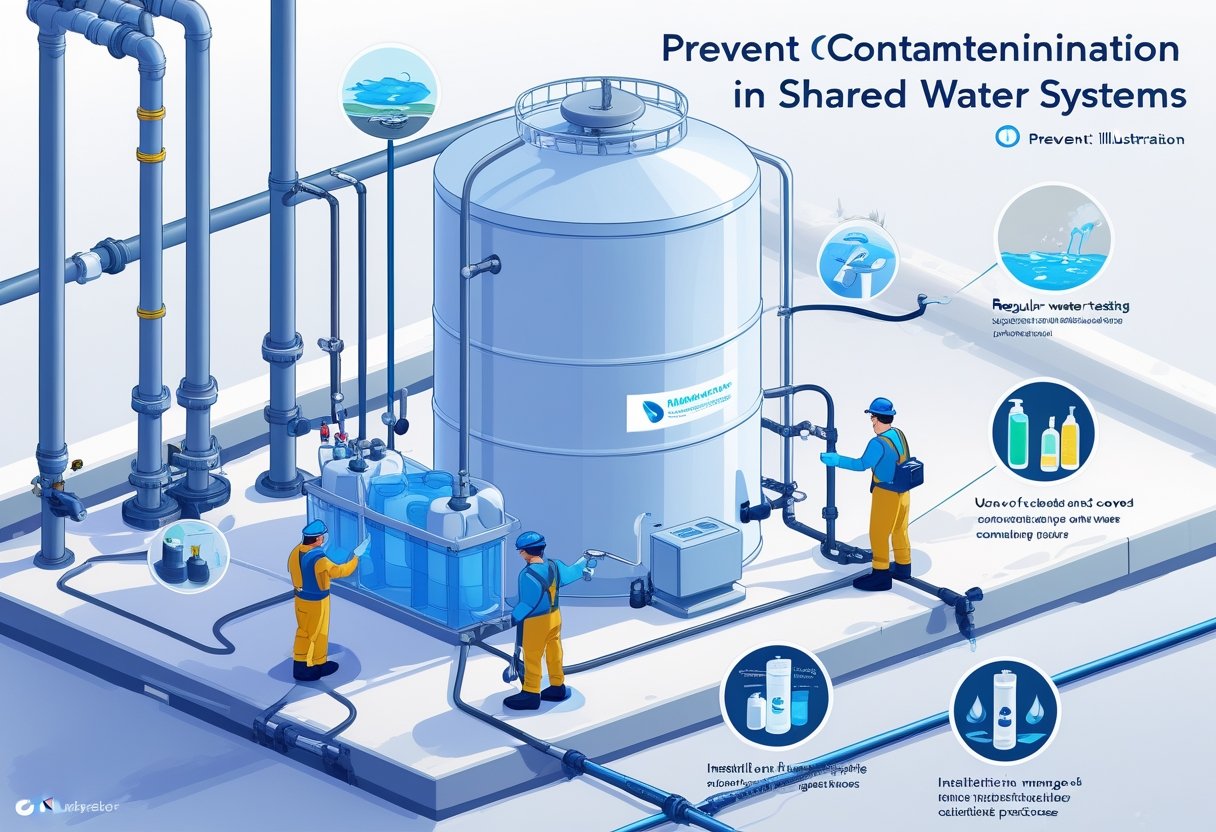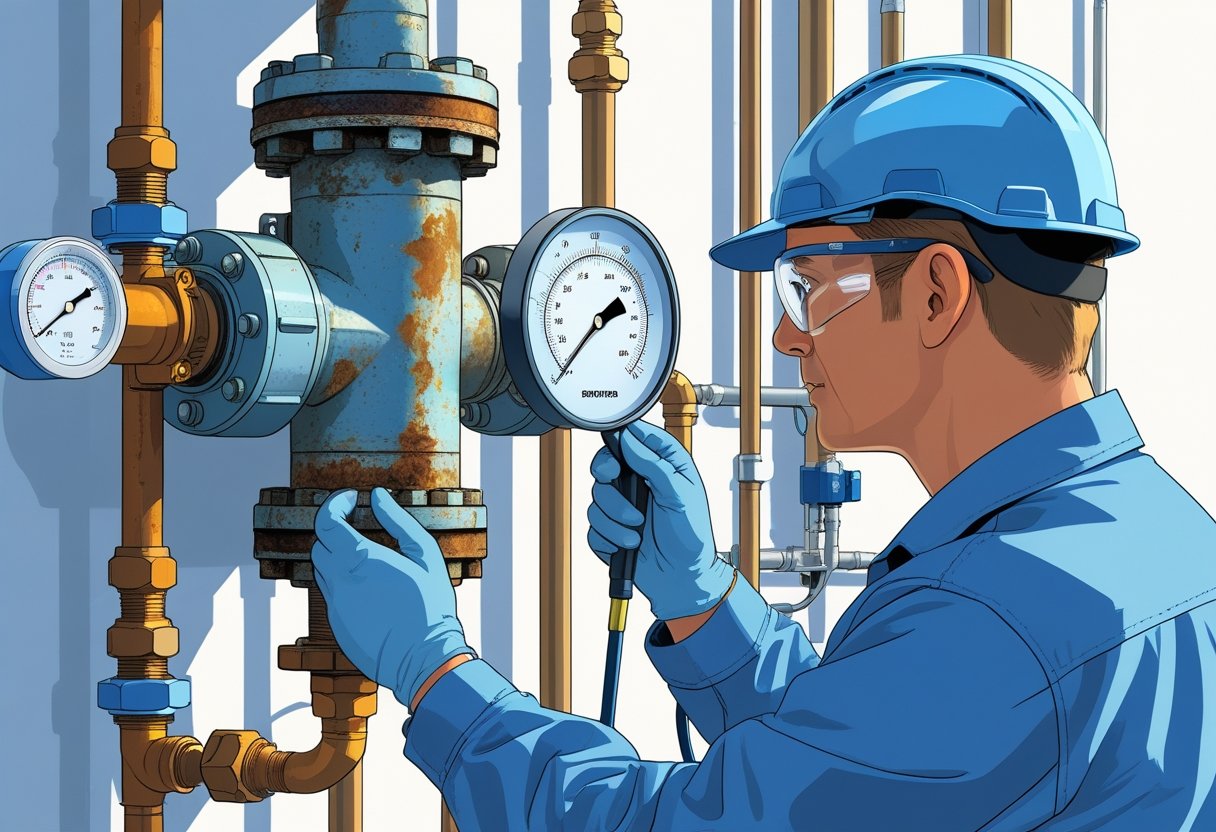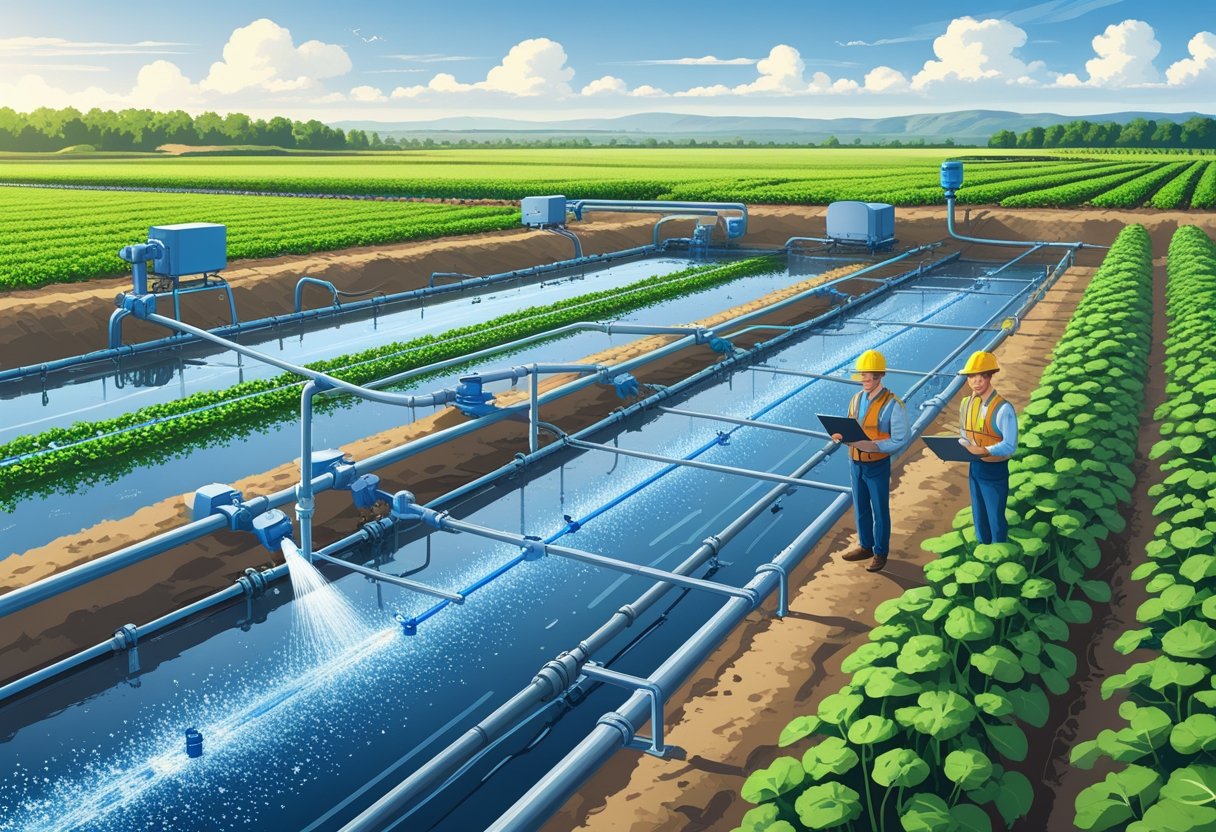Putting in a backflow cage gives your backflow preventer some much-needed protection. It keeps your device safe from theft, vandalism, and accidental knocks, helping you keep your water supply secure. Without it, your preventer’s exposed—risking contamination or expensive repairs.
Backflow cages also help you stay on the right side of local rules. When your preventer’s locked up and looked after, you’re less likely to run into system failures that could threaten your home or business water safety. Pacific Backflow’s been working with San Diego County for years, helping folks protect their systems with solid cage installs and testing.
Understanding Backflow Cages
Backflow cages do a lot more than just sit around your device. They fend off thieves, keep out vandals, and even handle the weather. If you know what these cages are, the types out there, and what they’re made of, you’ll have an easier time picking the right one.
What Is a Backflow Cage
A backflow cage is basically a metal or steel shell built around your backflow preventer. It stops people from messing with or stealing your device and shields it from weather and rough treatment.
You’ll spot backflow cages mostly around outdoor preventers because those need extra security. The cage lets in air and light, so the device stays dry and easy to reach for testing or repairs. Without one, your preventer’s an easy target for problems that could mess up your water or cost you money.
Types of Backflow Cages
Backflow cages come in a few main flavors—mostly different metals and designs. Steel and aluminum are the big ones since they’re sturdy and don’t rust easily.
Some use mesh panels for airflow and visibility, while others go with solid sides for more security. A locking door or hatch is pretty standard.
You can get custom-fitted cages that match your device’s shape and size. Getting one that actually fits matters—it keeps your preventer safe but still easy to access.
Key Components
A decent backflow cage usually has:
- Frame: Steel or aluminum bones that hold it together.
- Panels: Mesh for air, solid for extra security.
- Lock: Keeps out anyone who shouldn’t be poking around.
- Mounting Hardware: Bolts it down and sometimes lets you pop it off for repairs.
All these bits work together to guard your preventer without making it a pain to inspect or fix. Pacific Backflow builds custom cages that last and follow local San Diego rules, so your water system stays protected.
Protecting Backflow Prevention Devices
Keeping your backflow device safe makes sure it does its job and your water stays clean. It’s about stopping theft, avoiding damage, and steering clear of accidents. Simple steps, but they save you headaches and keep you compliant.
Defense Against Theft
Backflow devices attract thieves thanks to their parts and scrap value. A tough cage makes stealing your device way harder. Only folks with the key can get in.
When your device is locked up, thieves can’t swipe parts or cause leaks. You dodge surprise repair bills and keep your water system running as it should. Pacific Backflow makes custom cages to fit your gear and keep it safe in San Diego County.
Prevention of Vandalism
Vandals can wreck your preventer, leading to leaks or total breakdowns. A cage blocks most attempts to hit, tamper with, or spray stuff on your system.
With that shield, you cut down on downtime and lower the risk of water contamination. A strong, locked cage means only the right people get near your backflow device, keeping your water supply safe.
Shielding From Accidental Damage
Most backflow devices sit outside, right where accidents happen. Lawnmowers, cars, or falling branches can all do damage. A cage acts like a bumper, taking the hit so your device doesn’t.
This cuts down on costly repairs and keeps you out of trouble with local rules. With a cage, you worry less about day-to-day risks. Pacific Backflow’s durable cages stand guard all day, every day.
Enhancing Longevity and Durability
A backflow cage isn’t just for security—it helps your device last longer, too. It adds an extra layer of safety, so your preventer stays reliable, even when the weather’s rough.
Weather Resistance
Your preventer deals with everything—rain, blazing sun, wind. A cage shields it from all that. It blocks UV rays, rain, and wind, which can wear down your device over time.
Tough cage materials keep out moisture and buffer against temperature swings. That means fewer repairs and less chance your device will fail when you need it.
Cages also keep out dirt and debris, stopping clogs and keeping things running smoothly. Pacific Backflow has cages for all kinds of San Diego weather, helping you avoid expensive damage.
Corrosion Prevention
Corrosion’s a big problem for outdoor preventers—metal parts rust fast with moisture and chemicals around. A cage keeps the worst of it away.
Good cage designs let air flow through, drying out moisture before rust sets in. That keeps your device strong and working longer.
Guarding against corrosion also stops leaks and failures that would cost you to fix or replace. With a quality cage, your system stays in shape for the long haul.
Pacific Backflow builds cages that meet local codes and protect your investment for years.
Safety and Compliance Benefits
A backflow cage doesn’t just keep your device safe from troublemakers—it also helps you meet local rules and protects your water supply.
Regulatory Requirements
Plumbing codes usually demand backflow preventers to keep water clean. A cage helps your device stay put and do its job. Cities and counties—San Diego included—have strict rules. A cage can make inspections easier since it shows you’re following the law.
Annual testing and upkeep are often required. With a cage, your preventer’s easy to get to but still secure. Pacific Backflow handles tests and keeps your setup in line with all the regulations. That way, you avoid fines and keep everyone’s water safe.
Insurance Advantages
A cage lowers the odds of theft or vandalism, which means fewer repair or replacement headaches—and that can help with insurance claims. Some insurers might even give you a break on your rates if your property’s got good backflow security.
Keeping contamination at bay is a big deal to insurance companies. If something did go wrong, you could face liability or higher premiums. By installing a cage, you show you’re taking steps to prevent problems. That’s good for your wallet and your peace of mind.
Reducing Maintenance and Replacement Costs
A backflow cage helps you dodge frequent repairs and saves you money over time. It keeps your equipment safe, so you’re not always fixing or swapping out parts.
Minimizing Repair Frequency
Your preventer needs regular attention to stay in shape. A cage guards it from weather, critters, and vandals, so you’re not always dealing with broken bits or leaks.
A protected device is less likely to fail a test or need emergency repairs. That means fewer surprise expenses and less stress. Regular checkups plus a cage catch small issues before they get big.
Pacific Backflow can handle your tests and maintenance, spotting repairs early and keeping your water safe.
Protecting Investments
Backflow preventers aren’t cheap—replacing one can run $300 to $1,200. A sturdy cage keeps your gear safe from thieves and damage, protecting what you’ve already paid for.
Good protection means your device lasts longer. Most preventers make it 15–20 years with some care, so you really get your money’s worth.
Choosing a solid cage also shows you care about water safety and follow the rules. Pacific Backflow has reliable cages that fit your setup and meet San Diego County standards, keeping your system safe and running for years.
Improving Aesthetics and Property Value
A backflow cage isn’t just about security. If you do it right, it can fit in with your property’s style and even bump up its value. How the cage looks in your yard—and what it does for curb appeal—matters more than you’d think.
Blending With Landscape
A cage doesn’t have to stick out like a sore thumb. You can pick materials and colors that go with your plants, fences, or walls. Powder-coated finishes in earth tones blend well with greenery.
Stick the cage behind bushes or nestle it in a garden bed to keep it out of sight. That way, your yard stays tidy and natural.
You might even add wood panels or decorative screens around the cage. These options keep your device safe and make your landscape look finished. The right cage design protects your system without making your yard look like a construction zone.
Curb Appeal Considerations
How your place looks from the street counts—whether you’re selling or just want to keep things nice. A good-looking backflow cage can actually help your home’s curb appeal if you pick wisely.
Go for clean lines and a compact shape so you’re not blocking views or paths. If the cage is out front, try adding climbing plants or painting it to match your house.
Skip the bulky, rusty cages—they drag down your property’s look. A neat, secure cage shows you care about both safety and style. That can help keep your property value up.
Pacific Backflow can help you get a cage that’s safe, fits your property’s vibe, and keeps your water protected.
Installation and Ongoing Care
Getting your backflow cage set up right—and checking on it regularly—keeps everything working smoothly. Prep the spot carefully and give your equipment a look now and then to protect your water system from damage or theft.
Site Preparation Guidelines
Before you install your backflow cage, clear out the area around the backflow preventer. Leave enough room so you can reach it easily for maintenance down the line. You’ll want the ground to be level and solid so the cage sits securely.
Check your local regulations for any specific installation requirements. Some places have rules about how much clearance you need, or what materials you’re allowed to use. Go for materials that can stand up to rust and vandalism—no one wants to replace a cage every year. A strong cage not only keeps your system safe but also helps you stay on the right side of safety codes.
Tighten bolts and locks well, and maybe get a lock that only trusted folks can open. It’s smart to label the cage so inspectors or repair techs can spot it quickly. Honestly, a little extra effort now means fewer headaches later.
Inspection and Maintenance Tips
Give your backflow cage a good look at least once a year. Check for rusty spots, dents, or anything that looks like tampering. If you spot an issue, fix it right away—don’t wait for it to get worse.
Keep the area around the cage tidy and clear of junk. This keeps pests away and makes it easier to get to the backflow preventer if you need to test or fix it. While you’re at it, make sure the cage doesn’t block any valves or drains.
Get a certified professional to test your backflow preventer every year, like the folks at Pacific Backflow. They can handle repairs or swap out parts if needed. Staying on top of this stuff keeps your water safe and helps avoid bigger problems.
Frequently Asked Questions
A backflow cage does a lot for your outdoor plumbing. It keeps your device safe from thieves, weather, and random accidents. Honestly, knowing these details might help you feel better about your water safety needs.
What are the advantages of using a backflow cage for outdoor plumbing security?
A backflow cage shields your preventer from damage and vandalism. It protects against accidental bumps and people with bad intentions.
Plus, it makes it easier to get to your backflow preventer for maintenance. That way, your system keeps working like it should.
How does a backflow cage help in preventing theft or tampering?
A solid, custom-fitted cage acts like a barrier. It makes it tough for thieves or anyone who shouldn’t mess with your water supply.
Protecting the device helps you avoid expensive repairs and keeps your water safer.
Can installing a backflow cage improve the longevity of the backflow preventer device?
Definitely. The cage shields your backflow preventer from physical and environmental damage, so it doesn’t wear out as fast.
With better protection, you’ll probably need fewer repairs and replacements—always a win for your wallet.
Does the use of a backflow cage comply with local plumbing codes and regulations?
Most local water districts, including San Diego County, allow backflow cages under their plumbing safety rules.
Just make sure your cage fits the size and design standards your area requires.
Why is it important to choose the correct size backflow cage for your system?
A cage that fits right hugs your backflow preventer without blocking anything important. That makes inspections and repairs a lot easier.
Pick the wrong size, though, and you might run into problems with maintenance—or even break local codes. No one wants that hassle.
How does a backflow cage provide protection against weather elements?
Backflow cages do a pretty solid job shielding your backflow preventer from rain, harsh sun, and those wild temperature swings. With that kind of cover, corrosion and weather damage don’t stand much of a chance.
So, your water stays safer, and the device keeps chugging along, no matter what the season throws at it.











